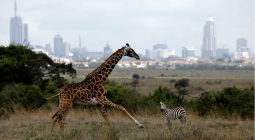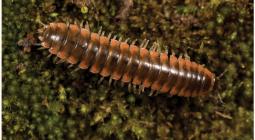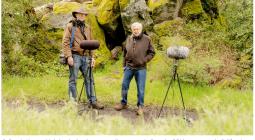Swedish hunters kill more than 150 brown bears in first days of annual cull

A male bear shot in Ljusdal, 200 miles north of Stockholm. Licences to kill 486 of Sweden’s 2,400 or so brown bears were issued this year. Photograph: Adam Ihse/TT News Agency/Alamy
More than 150 brown bears have been killed in the opening days of Sweden’s annual bear hunt, as controversy mounts over what conservationists have called “pure slaughter”.
The Swedish government issued 486 licences to shoot bears in this year’s hunt, equivalent to about 20% of the remaining brown bear population. This follows a record-breaking cull of 722 bears last year. By Thursday afternoon – the second day of the hunt – 152 bears had already been shot, according to Sweden’s Environmental Protection Agency.
The hunt has become the focus of growing controversy, and this year police accompanied hunters for the first time in anticipation of local protests.
Magnus Orrebrant, chair of the Swedish Carnivore Association, a pro-wildlife advocacy group, said: “Modern hunting methods make it extremely easy to kill a bear – one could liken it to pure slaughter.”
Police officers have been patrolling the forests on foot and with drones to ensure the “hunters’ peaceful progress” amid concerns that the increased licences could provoke protests.
“We have deemed it necessary to ensure that there is no interference with the hunters doing their job during this year’s bear hunt,” said Joacim Lundqvist, a police officer and wildlife coordinator for the north of Sweden. “This is because there has been an increase of protesters in the lynx and wolf hunts that occurred earlier this year.”
Magnus Jensen, a consultant at the Swedish Hunting Association in Falun, said: “In previous years there has been a sense of threat from protesters. This year, there is not the same sense of fear.”
Bears were hunted almost to extinction in Sweden a century ago, but numbers recovered to a peak of 3,300 in 2008. In the years since, the culls have cut bear numbers by 40% to about 2,400. If they continue at a similar rate, next year’s cull will bring numbers close to the minimum 1,400 bears considered necessary to maintain a viable population by the Swedish government.
Over the past two years, Sweden has culled hundreds of wolves, lynxes and bears, with last year’s hunts breaking modern records for the number of animals killed. In 2023, the country held the largest wolf hunt in modern times, aiming to cull 75 of an endangered population of just 460 wolves.
Ecologists are concerned that if they continue, the hunts may have repercussions across the region. Earlier this month, Norwegian environmental groups appealed to Swedish authorities in some border regions to turn down the licences to kill the bears, arguing that they threatened the brown bear population in both countries. Their appeal was denied.
Truls Gulowsen, head of the Norwegian Nature Conservation Organisation, said they were “very concerned with this culling”.
He said: “It’s a significant and quite dramatic reduction of the Scandinavian brown bear population. Now that Sweden is seriously decreasing its stock, it will impact the survivability of the entire Scandinavian population.”
Jonas Kindberg, of the Swedish University of Agricultural Sciences, and the lead scientist for the Scandinavian Bear Project, said: “If you want the population to remain stable at around the 2,400 animals as we estimate today, you can only shoot about 250 bears annually.”
Brown bears are a “strictly protected species” in Europe, and conservationists argue that the high hunting quotas could breach the EU habitat directive, which prohibits “deliberate hunting or killing of strictly protected species”. Under EU rules, this prohibition can only be lifted as a “last resort” to protect public safety, crops or natural flora and fauna.
Magnus Rydholm, communications director for the Swedish Association for Hunting and Wildlife Management, said the brown bear was not typically dangerous to people. “No, it’s not,” he said. “It is mostly interested in blueberries. Of course, if it’s provoked it can become dangerous.”
Rydholm said hunting was part of Sweden’s cultural heritage: “I would argue that northern Sweden would never have become habitable had it not been for hunting with free-running dogs. It is a cultural heritage, and a right, which we must protect.”
As well as high numbers of licences, Sweden has relaxed its hunting regulations to allow the use of bait, cameras and dogs to kill the bears – practices that were previously illegal.
This year, local administrations in Sweden have seen 1,455 applications to use bait in the hunt – a 50% increase. Barrels of food attract the bears, and cameras send alerts when a bear appears. Hunters may then set their dogs on the animals, which are then shot. Hunters argue that the methods cause the bear less stress.
Wolves and bears have been a conservation success story across the EU, with numbers surging back from the brink of extinction thanks to strict protections and hunting bans. But now Sweden is among a number of European countries that have stepped up the hunting of large carnivores.
This year, Romania announced a cull of nearly 500 brown bears, despite their protected status. Germany is in the process of relaxing its rules on wolf hunting, and the European Commission president, Ursula von der Leyen, has been part of a wider push to loosen protections for wolves across the EU.





